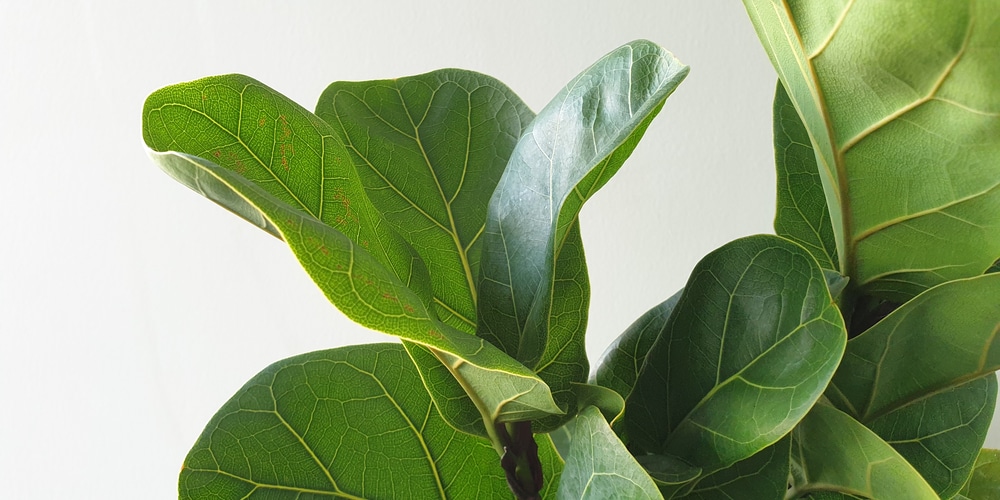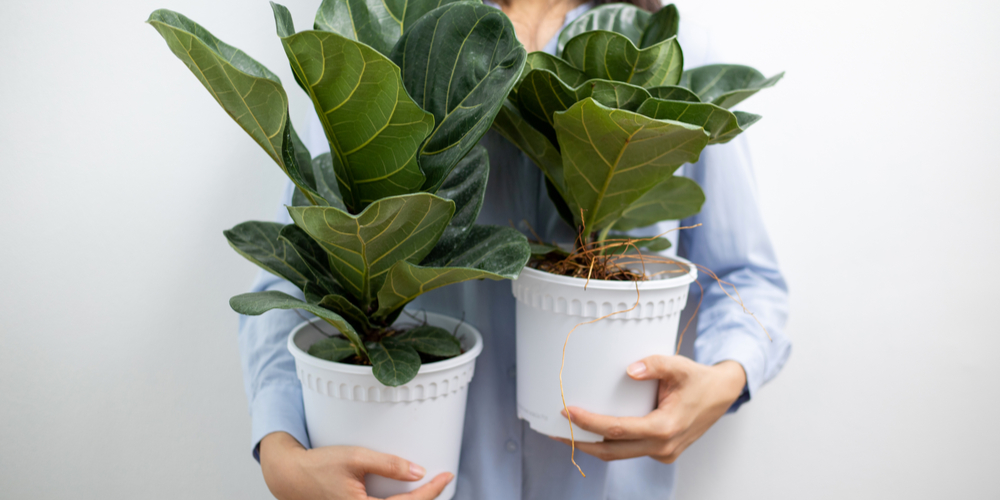Yes, fiddle leaf fig leaves will grow back. If your fiddle leaf fig tree loses its leaves, it is usually due to root rot, overexposure to sunlight, or even sudden temperature change.
However, with a proper routine and understanding of what different colored leaves mean, your fiddle leaf fig tree will inevitably grow back its leaves if taken care of properly.
Understanding the Leaves on Your Fiddle Leaf Fig Tree

When you notice a change in color, texture, or shape in the leaves, it is most definitely a sign of disruption within the plant. However, once you understand your leaves, fiddle leaf fig trees are easy to care for if routinely nurtured and loved.
Brown Leaves
If your leaves are brown, it is most likely overwatered; take the time to allow the soil to dry out at least two inches deep before re-watering. The leaves also need a plethora of sunlight, so it is best to keep the tree by a window, or else they will shed.
Yellow Leaves
Yellowing leaves most likely indicate a bacterial infection. It could be too late to save your fiddle leaf fig tree, though try pruning the leaves and repotting the soil to attempt to save it. Then, move it to a place in your home where it’s warm and moist, like next to a humidifier or in a sunny bathroom.
This plant is native to Africa, deep in its jungles, so completely replicating hot and moist environments will never be too easy at first.
Sun-Bleached Leaves
If the leaves become sun-bleached or severely lightened, it is likely by overexposure to sunlight. Try moving them where they can absorb indirect sunlight as opposed to direct.
Dry, Curled Leaves
Underwatering your fiddle leaf fig tree will dry up the leaves and appear curled, brittle, and hard. Make sure to maintain a weekly watering schedule and allow the top two inches of soil to dry out.
Pruning and Rotating Helps Promote Growth
Fiddle leaf fig leaves respond best to pruning and rotating.
Rotating
Rotating the leaves will distribute equal sunlight on both sides of the tree, creating an even structure. Be attentive to dust on leaves as it may create a thin obstructive layer; use a moist cloth to gently wipe the dust from the leaves, allowing more sunlight to be absorbed.
Pruning
Regularly pruning the leaves or branches will create an artificial seasonal growth away from colder months. Pruning will naturally maintain your fiddle leaf fig tree within warmer months. This allows it to thrive without accidentally creating a growing cycle out of those warm times.
Pruning allows you to give new room for your fiddle leaf fig tree and lessen the chances of any sickness. Cutting through damaged leaves, overgrowth, and crossing branches will allow the plant to breathe better and limit the strain from these variables.
Be gentle and use the appropriate pruning tools to prohibit damage. Be careful cutting too close to the trunk, and pull gently on damaged leaves to avoid pulling the leaf entirely from its stem.
Ultimately, pruning is your best solution when at an impasse for your sick fiddle leaf fig tree. Just make sure you are not greedy. The key is to be strategic and clever with how much you remove.
Final Thoughts
Pruning is not a high priority for an indoor fiddle leaf fig tree as it will not grow fruit, though it will still grant success in your green thumb endeavors.
It is a finicky process, but just keep a routine on your fiddle leaf fig tree. Keep it warm and humid, give it plenty of indirect, sometimes direct, sunlight as well as rotating it, and plenty of water. Your tree and your fiddle leaf fig leaves will brighten up your home with their tantalizing beauty and brilliant shape, so keep an eye on those leaves to ensure you are taking good care of your fiddle leaf fig tree.
